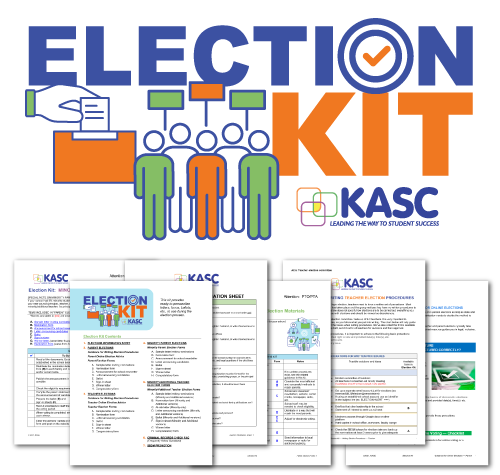School Safety Resource Guide for Teachers and Administrators
From: https://safetymanagement.eku.edu/
There have been at least eight school shootings in 2019 resulting in injuries or deaths, according to Education Week’s 2019 School Shooting Tracker. In 2018, there were 24 school shootings in the United States that resulted in the loss of 35 lives and injury to 79 people.
 Students, teachers and parents are concerned about shootings and school safety threats, but many different theories exist on how to address this growing problem. In the 2018 PDK poll, where over 1,000 people in the U.S. answered questions about education topics, parents said they were not supportive of arming teachers. While most parents supported the idea of mental health screenings, “there is no screening that will identify students who are likely to become school shooters,” Kathleen Minke writes for PDK International. Beyond school shootings, there are other school safety threats facing students. According to the American Society for the Positive Care of Children, an estimated 160,000 kids skip school each day for fear of being bullied Across the world, around one-third of students aged 13-15 are involved in physical altercations, UNICEF reports.
Students, teachers and parents are concerned about shootings and school safety threats, but many different theories exist on how to address this growing problem. In the 2018 PDK poll, where over 1,000 people in the U.S. answered questions about education topics, parents said they were not supportive of arming teachers. While most parents supported the idea of mental health screenings, “there is no screening that will identify students who are likely to become school shooters,” Kathleen Minke writes for PDK International. Beyond school shootings, there are other school safety threats facing students. According to the American Society for the Positive Care of Children, an estimated 160,000 kids skip school each day for fear of being bullied Across the world, around one-third of students aged 13-15 are involved in physical altercations, UNICEF reports.
The threats facing school safety are real and complex. But teachers and administrative officials are developing new methods to combat these problems.
School violence and school shooting statistics
The devastating effects of school shootings and violence have been covered extensively, but teachers and administrators need to be aware of their real severity. Below are statistics on school shootings from the U.S. Center for Homeland Defense and Security (CHDS), as well as facts and figures about school violence.
School shooting statistics
- There were more school shooting incidents in 2018 than any other year in history [CHDS]
There were 97 reported incidents in 2018, far exceeding the previous most violent year in 2006 with 59.
- Shooters were most often students at the school [CHDS]
There were 702 incidents since 1970 where the shooter was a student at the school.
- Shooting incidents frequently take place early in the school day [CHDS]
Out of 1,362 incidents since 1970, the largest number of shootings (291) took place in the morning.
- In 890 of the reported incidents, the shooter targeted specific victims [CHDS]
According to the data, perpetrators behind most school shooting incidents targeted individuals they knew.
Bullying and school violence statistics
- Both bullies and victims more frequently resorted to non-suicidal self injury (NSSI) [Psychiatry Research]
According to an article in Psychiatry Research, “being rejected by peers amplifies the probability, for both victims and bullies, of using NSSI at least once.”
- LGBTQ individuals and students with disabilities were at-risk populations for increased bullying [Center for Urban Education Success]
Students with disabilities were reported to be more prone to bullying and being victimized by bullying acts. Bullied LGBTQ students suffered a lack of intervention by administrators or teachers on their behalves.
- 5 percent of high school students responded they had been in a physical fight on campus one or more times in the past year [Centers for Disease Control and Prevention (CDC)]
The CDC reported that across the country, approximately 7 percent of students said they had missed school for at least one day due to concerns over their safety.
Nonviolent school crime and other disruption
In addition to school shootings and other violent threats, teachers and administrators must also grapple with nonviolent crimes and events that can disrupt educational activities.
Hate crimes
In 2017, 10.5 percent of all hate crimes took place at schools and colleges, according to the Federal Bureau of Investigation (FBI). The Bureau’s professionals define a hate crime as “a traditional offense like murder, arson or vandalism with an added element of bias.” For schools, a hate crime could include painting a swastika onto a wall to make students of a Jewish background feel intimidated, threatened or uncomfortable, or posting notes on a bulletin board with messaging that attacks or makes fun of a peer’s cultural background.
Additionally, hateful behavior and attacks can happen to students off school grounds. Students can commit hate crimes through cyberbullying efforts such as sending an offensive message or image on social media that insults race or heritage. From the Teaching Tolerance report, Responding to Hate and Bias at School:
Everyday acts of intolerance manifest themselves in many ways: name calling; slurs; sexual harassment; casual putdowns regarding race, ethnicity, gender, size, abilities, perceived sexual orientation or gender identification. The bias might come in the form of clothing — certain colors or styles — or music or symbols associated with hate groups. Growing intolerance can also be found online, posted on Tumblr or tweeted on Twitter. It might be blatant, such as a noose left hanging from an African-American student’s locker. Or it might be subtle, a hushed rumor texted like a whisper, phone to phone, person to person.


